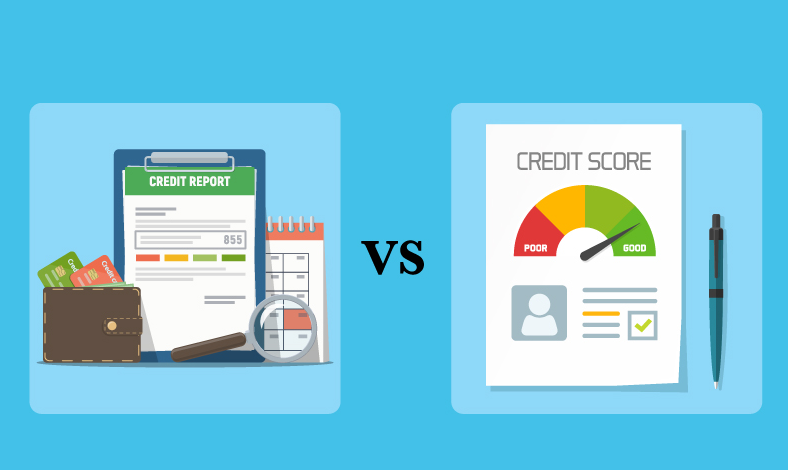Rebuild Your Credit After Bankruptcy
How to Rebuild Credit After Bankruptcy
The decision to file for bankruptcy is often difficult and a complex legal process can be not only challenging but also detrimental to your credit. However, the effect of bankruptcy on your credit report is not permanent and will last for seven or 10 years depending on the type. In addition, the effects of bankruptcy diminish over time and there are many ways to improve your score.
How to rebuild your credit after bankruptcy?

If you are currently going through a bankruptcy or have recently gone through it, here are a few things to keep in mind when rebuilding your credit.
Here are some tips to help you get credit after bankruptcy:
- Don’t try to borrow money too quickly.
- Focus on making on-time payments.
- Build an emergency fund.
- Stick to a budget.
- Keep a close eye on your credit reports and scores.
Beyond these, there are other strategies that can help.
Here are some credit products that are designed to do this, as well as other ways to improve your financial profile:
1. Check your credit reports.
Until April 2021, you can check your weekly reports for free on AnnualCreditReport.com. Your credit scores are calculated using the information contained in your credit reports, so any false negative information can make it more difficult for you to get out of debt. If you find errors, argue and correct the credit report errors.
Of course, there will be negative information that is accurate. Bankruptcy eliminates or reorganizes debt, but it does not clear your credit reports. Your reports will show Chapter 7 bankruptcy for 10 years, or Chapter 13 for 7 years. Delayed payments and debts that go to recovery also remain on reports for up to seven years after corruption. All you have to do is wait for this information to expire.
2. Check your credit score.
It is important to track your credit score from month to month, and it is important to look at the same score every time, otherwise, you will find a useless comparison of orange with apple. Choose a type of score to track and stick to.
3. Find a credit product for your situation.
Your pre-bankruptcy repayment date will make you look like a very dangerous borrower to lenders. You can solve this problem by giving extra assurances that they will not lose money by giving you a loan.
- Get a secured loan or credit-builder loan: It falls into two categories and is often offered through credit unions or community banks. One type of secured loan involves taking out a loan for the amount you already have on deposit. You will not be able to access this amount while you are repaying your loan. The second type of cash-up can be done without a front, although the money lent to you is kept in a savings account and is released only after you make the necessary payments. In return, the financial institution agrees to send a report to the credit bureau regarding the date of your payment.
- Get a Secured Credit Card: This type of card is backed by a deposit you pay, and the credit limit is usually the amount you have on the deposit. A secured card often has an annual fee and may have a high-interest rate, but you should not need it for a long time. It can be used to correct your credit unless you qualify for a better, more secure card.
Be aware that you may be rejected for a secure card. Read the requirements carefully; You’ll want to make sure you get approval before you apply, as each credit inquiry can cause a small, temporary drop in your score. If you get a card, use it lightly, and repay the loan on time, the deduction will be more than the offset. - Ask someone to sign a credit card or loan application: This may help your score, but you should have a friend or family member with a good credit history who is a good signing partner for you. Get ready this is a big question: a co-signer is endangering your creditworthiness for you, if you do not pay, the whole amount will be at risk, and taking out a personal loan due to extra debt liability. May face restrictions. If you do not pay as agreed, the co-signed card or loan may damage the relationship.
- Ask to be an authorized user: If asking someone to co-sign is too much, you can ask them to become an authorized user on that person’s credit card instead. But make sure that the credit card will report the payment activity from the authorized customers to the credit bureau, otherwise, it will not help to build your score.

This route will not raise the score as much as other methods, as the authorized users do not have the final obligation to repay the loan. (This is more likely to help someone with a “thin file” that contains a little bit of credit information than someone who has a file full of negative information.) But that doesn’t hurt the path. Will arrive, so you want to pursue it.
How long does it take to rebuild your credit after bankruptcy?
Perhaps the most frustrating part of filing for bankruptcy is how long it takes to recreate your credit after the fact. The time of bankruptcy on your credit report varies depending on the type of bankruptcy. In addition, the credit repair process largely depends on whether the borrower takes deliberate steps to actively improve his / her score.
Chapter 7 How long does it take to rebuild your credit after bankruptcy?
Chapter 7 bankruptcy lasts for 10 years on the borrower’s credit report. This means that after 10 years, all bankruptcy records must be removed from your credit report. That said, the effect of bankruptcy on credit score is lessened as time goes on due to which there is an immediate decrease in consumer debt to earnings (DTI) ratio, which is how much you owe in terms of available credit amount. If paid you have it. Because of this, you may start to see improvement in one to two years after discharge.
Chapter 13 How long does it take to rebuild your credit after bankruptcy?
Unlike Chapter 7 bankruptcy, a Chapter 13 bankruptcy lasts only seven years on the user’s credit report. Generally, though, it takes 12 to 18 months to improve your credit score after your Chapter 13 bankruptcy. Many lenders can refinance their restructured loans after 18 months.






